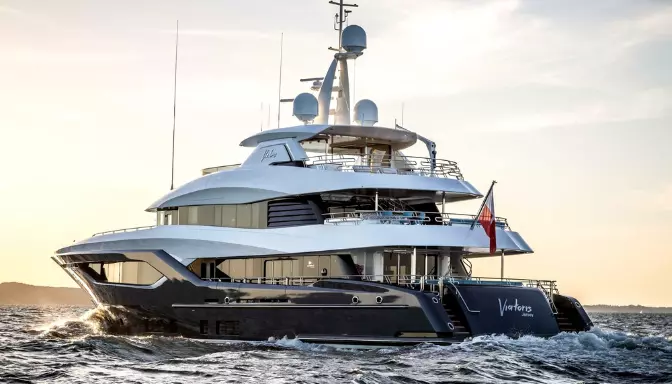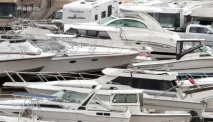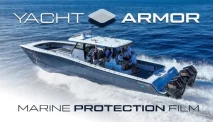Diksia.com - Yachts are a symbol of luxury and adventure, but they also come with some risks. Whether you own a yacht, rent one, or join a yacht club, you need to be aware of the potential hazards and how to avoid them. In this article, we will explore the main aspects of yacht safety, from the design and maintenance of the vessel to the navigation and emergency procedures. We will also provide some tips and resources to help you enjoy your yacht experience safely and responsibly.
How Safe are Yachts?
Yachts are generally safe, as long as they are well-designed, well-maintained, and well-operated. However, there are some factors that can affect the safety of a yacht, such as:
- The size and type of the yacht. Larger yachts tend to be more stable and comfortable, but they also require more skill and equipment to operate. Smaller yachts are more agile and economical, but they can be more vulnerable to weather and waves. There are also different types of yachts, such as motor yachts, sailing yachts, catamarans, and trimarans, each with their own advantages and disadvantages.
- The weather and sea conditions. Yachts are designed to withstand a range of weather and sea conditions, but they are not invincible. Extreme weather, such as storms, hurricanes, and lightning, can pose a serious threat to a yacht and its crew. Even moderate weather, such as wind, rain, and fog, can affect the visibility, maneuverability, and communication of a yacht. Therefore, it is important to check the weather forecast and sea state before and during a yacht trip, and to avoid sailing in hazardous conditions.
- The location and destination of the yacht. Yachts can travel to many places around the world, but some regions are more dangerous than others. For example, some areas may have piracy, terrorism, or civil unrest, which can endanger the security of a yacht and its passengers. Other areas may have environmental hazards, such as coral reefs, icebergs, or marine life, which can damage the hull or propeller of a yacht. Therefore, it is important to research the location and destination of a yacht trip, and to follow the local laws and regulations.
- The crew and passengers of the yacht. Yachts are operated by a crew, which can vary in size and qualification depending on the type and size of the yacht. The crew is responsible for the safety and comfort of the yacht and its passengers, and they need to have the appropriate training, certification, and experience to do so. The passengers of a yacht also have a role in ensuring their own safety, by following the instructions of the crew, wearing the proper gear, and behaving responsibly.
How to Make Your Yacht Safer?
There are many ways to make your yacht safer, both before and during a yacht trip. Here are some of the most important ones:
- Choose a reputable yacht manufacturer, dealer, or charter company. When buying, renting, or joining a yacht, you want to make sure that the yacht is of high quality and meets the safety standards. You can do this by choosing a reputable yacht manufacturer, dealer, or charter company, and by inspecting the yacht yourself or hiring a professional surveyor. You should also check the reviews and ratings of the yacht and the company, and ask for references and testimonials from previous customers.
- Maintain your yacht regularly and properly. A yacht needs regular and proper maintenance to keep it in good condition and to prevent any malfunctions or breakdowns. You should follow the manufacturer’s guidelines and schedule for the maintenance of your yacht, and hire a qualified technician or mechanic to perform the necessary repairs and replacements. You should also keep a logbook of the maintenance history and the current status of your yacht, and report any issues or defects to the manufacturer or dealer.
- Equip your yacht with the essential safety equipment and devices. A yacht should have the essential safety equipment and devices to deal with any emergencies or accidents that may occur. These include:
- Life jackets and life rafts for every person on board, and a lifebuoy with a light and a whistle attached to the yacht.
- Fire extinguishers, smoke detectors, and fire blankets for every compartment of the yacht, and a fire alarm system connected to the bridge.
- First aid kits, medical supplies, and a defibrillator for any injuries or illnesses that may occur on board, and a radio or phone to contact the nearest medical facility.
- Navigation equipment, such as a compass, a GPS, a radar, and a chart plotter, to determine the position and direction of the yacht, and to avoid any obstacles or hazards.
- Communication equipment, such as a VHF radio, a satellite phone, and an emergency position-indicating radio beacon (EPIRB), to communicate with other vessels, the coast guard, or the rescue services, and to send a distress signal in case of an emergency.
- Safety signs, labels, and instructions, such as “No Smoking”, “Emergency Exit”, and “How to Use a Fire Extinguisher”, to inform and guide the crew and passengers on the safety procedures and precautions of the yacht.
- Train your crew and educate your passengers on the safety rules and procedures of the yacht. A yacht should have a trained and competent crew to operate and manage the yacht safely and efficiently. The crew should have the relevant qualifications, licenses, and certificates to perform their duties, and they should undergo regular drills and exercises to refresh their skills and knowledge. The crew should also educate the passengers on the safety rules and procedures of the yacht, such as:
- How to wear and use a life jacket and a life raft, and where to find them on board.
- How to locate and use the fire extinguishers, smoke detectors, and fire blankets, and where to find them on board.
- How to access and use the first aid kits, medical supplies, and the defibrillator, and where to find them on board.
- How to read and follow the safety signs, labels, and instructions, and where to find them on board.
- How to behave and cooperate in case of an emergency, such as a fire, a collision, a man overboard, or a sinking.
- Plan your yacht trip carefully and wisely. A yacht trip should be planned carefully and wisely, taking into account the weather and sea conditions, the location and destination, the duration and distance, the budget and expenses, and the preferences and expectations of the crew and passengers. You should also prepare a detailed itinerary and a contingency plan for your yacht trip, and share them with your family, friends, or authorities. You should also check the weather forecast and sea state regularly, and adjust your plan accordingly. You should also avoid sailing in the dark, in unfamiliar waters, or in crowded areas, and always keep a safe distance from other vessels, the shore, and any obstacles or hazards.
How to Enjoy Your Yacht Safely?
Yachts are meant to be enjoyed, not feared. Yachts can offer you a lot of fun and excitement, as well as relaxation and comfort. You can do many activities on a yacht, such as:
- Sunbathing and swimming on the deck or in the sea, but make sure to wear sunscreen, sunglasses, and a hat, and to stay hydrated and cool.
- Fishing and snorkeling in the water, but make sure to wear the appropriate gear, and to follow the local rules and regulations.
- Dining and drinking on the yacht, but make sure to eat healthy and balanced meals, and to drink moderately and responsibly.
- Playing and partying on the yacht, but make sure to respect the privacy and comfort of others, and to keep the noise and music at a reasonable level.
- Reading and relaxing on the yacht, but make sure to take breaks and stretch your muscles, and to enjoy the scenery and the company.
However, you should also be aware of the potential dangers and risks of these activities, and take the necessary precautions and measures to prevent or minimize them. For example, you should:
- Avoid swimming or diving in cold, deep, or rough water, or in areas with strong currents, waves, or tides, or with dangerous marine life, such as sharks, jellyfish, or stingrays.
- Avoid fishing or snorkeling without a buddy, or without informing the crew or the passengers, or without checking the weather and sea conditions, or without carrying a whistle, a knife, or a flashlight.
- Avoid dining or drinking on an empty stomach, or before or after swimming or diving, or while taking medication, or while feeling sick or dizzy, or while operating or handling any equipment or device.
- Avoid playing or partying on the edge or the roof of the yacht, or near any open or moving parts, such as the propeller, the anchor, or the winch, or while wearing loose or dangling clothing, jewelry, or accessories.
- Avoid reading or relaxing in a closed or confined space, or in direct sunlight, or without ventilation, or without wearing a seat belt, or without keeping an eye on the surroundings.
Conclusion
Yachts are safe, as long as you follow the safety guidelines and best practices. Yachts are also fun, as long as you enjoy them safely and responsibly. Yachts are a great way to experience the sea, but they also require a lot of care and attention. Therefore, you should always respect your yacht, your crew, your passengers, and yourself, and you will have a wonderful yacht adventure.






